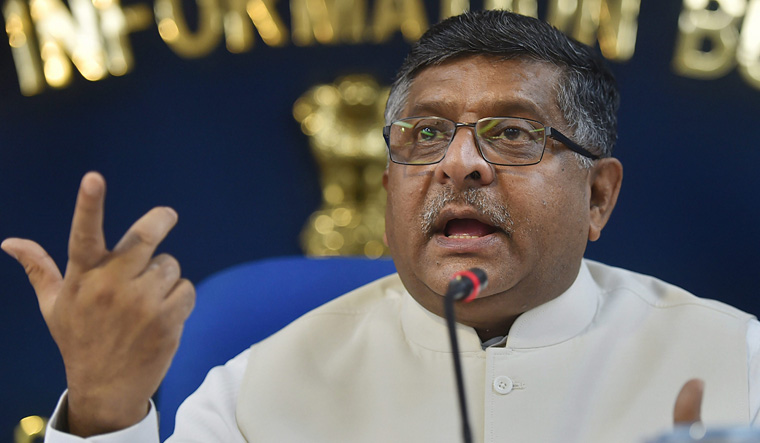Digital footprints can be a very embarrassing thing, as Union IT Minister Ravi Shankar Prasad found out to his dismay on Friday evening, soon after Twitter’s awry blocking of his account. As the minister continued his tirade from previous days against the American microblogging site (ironically on the very platform he was lashing out at), an old tweet of his surfaced, and started going viral.
In this tweet from 2016, Prasad gushes forth on Twitter. “Freedom of expression & information sharing has got new strength from social media,” he wrote, referring to Twitter. Worse, the hashtag he’s attached leaves no doubts - #LoveTwitter, followed by a red heart emoji.
Obviously it's a love that has gone sour since then. A champion of new media and rapid digitisation initially, the Modi government has gone hammer and tongs at Big Tech in recent months, with the ruling party, and the government, taking turns attacking the digital supremos. From OTT platforms like Netflix and Amazon Prime, to social media like Twitter and WhatsApp, the present dispensation’s ire has been mighty clear, manifesting in the hasty pushing through of the intermediaries act which came into force last month.
A war of words, multitude of court cases and public discourses — some on the very platform they are supposed to fight against—have followed suit. The Facebook/WhatsApp combine has gone to court, while Google has flagged it being referred to as a social media entity.
Amidst all this, the government’s strongest tirade has been reserved for Twitter. The microblogging site punches above its weight, considering that it barely has 1.7 crore active users in the country according to Statista. The likes of Facebook would have multiple times that number—Facebook’s ‘cool dude’ subsidiary Instagram itself has 12 crore users.
Yet, Twitter’s significance comes from the fact that its followers are the who’s who of the establishment. From leaders to policy makers to business tycoons to planners, journalists and activists, Twitter users virtually set the agenda, not just in news, but also in policy and what becomes the talking. And hence, the particular ‘attention’ Prasad and co. have been paying on it.
Twitter itself, typical of the unconventional leadership it has (founder Jack Dorsey, for example, is not your typical yuppie CEO, and is said to spend his weekends in isolation on a near-starvation diet) has also made it a point to cock a snook at the powers-that-be. For example, during the farmer’s agitation and the disastrous raid on Red Fort, government wanted Twitter to block several accounts and posts. Twitter refused first, then blocked some tweets only for a few hours, and then finally capitulated after further severe warnings from the government. Here also, it issued a blog which made it clear that it stood foremost for freedom of speech, and slyly let it slip that some of the tweets government wanted blocked were only blocked within Indian jurisdiction!
Despite that, it is more likely that the Friday blocking of Prasad’s account for one hour was more a work of its automated system than any conscious attempt to muzzle the very minister who was at loggerheads with them. The Digital Millennium Copyright Act is not a new law as it sounds — it was passed during the Clinton years as a means to safeguard copyright (till then pertaining to publishing and print) to the then nascent internet space.
However, its implementation by Big Tech has picked up speed in last couple of years, due to two reasons. First is the developments in artificial intelligence (AI) and automation. Because of this, illegal use of copyrighted material, be it music, film clips or even a TV interview (as the case seems to be in Prasad’s case) can be instantly found out by software. Platforms like YouTube and Instagram have been increasingly using this tool to weed out people who post videos or dance sequences using music without license.
Secondly, the pandemic season has also seen many of these American companies using more automated tools than human verifiers in checking for content going against their community guidelines and intellectual property rights protection. Could that be the reason behind this possible faux pas?
Or did someone actually play mischief by consciously making a complaint to copyright issues on Prasad’s timeline? More unlikely would be Twitter knowingly taunting the minister with such an action. Though, you have to admit, that could make this incident suddenly more juicy!





